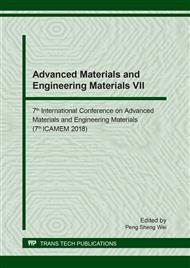p.372
p.377
p.381
p.386
p.393
p.397
p.402
p.411
p.416
Analysis of Surface Roughness and Wear Mechanism when Cutting Hardened Steel Rolls
Abstract:
In modern steel industry, hardened steel rolls are very important tools. The increase of the automobile and the mould keeps the amount of rolls increases fairly quickly. In cutting process, hardened rolls are very difficult to turn or mill, there for, almost all hardened rolls are cut only by grinding, which causes low efficiency, besides in grinding process and a lot of cutting fluid are used. In this paper, surface roughness of workpiece was analyzed of the ceramic tools in different cutting conditions. Wear machanism of crack and abrasive of cutting tools were also analyzed. The experimental and theoretical analysis confirmed that when the ceramic tools cutting cold rolls, the generation and expansion of the cracks the most important role that affect tool life and workpiece surface roughness.
Info:
Periodical:
Pages:
393-396
Citation:
Online since:
August 2018
Authors:
Keywords:
Price:
Сopyright:
© 2018 Trans Tech Publications Ltd. All Rights Reserved
Share:
Citation:


